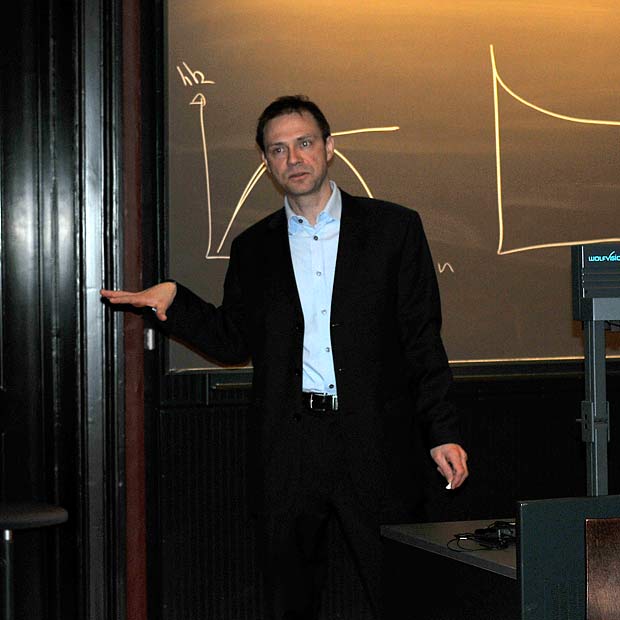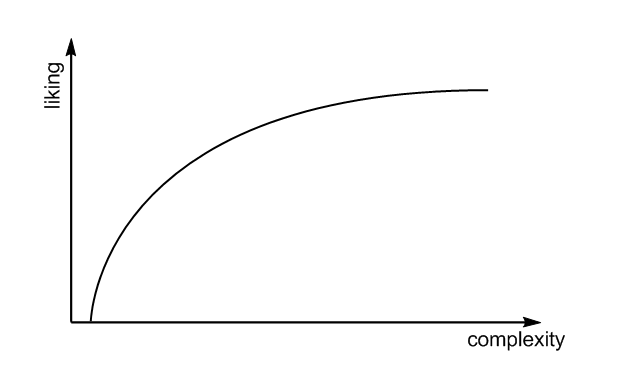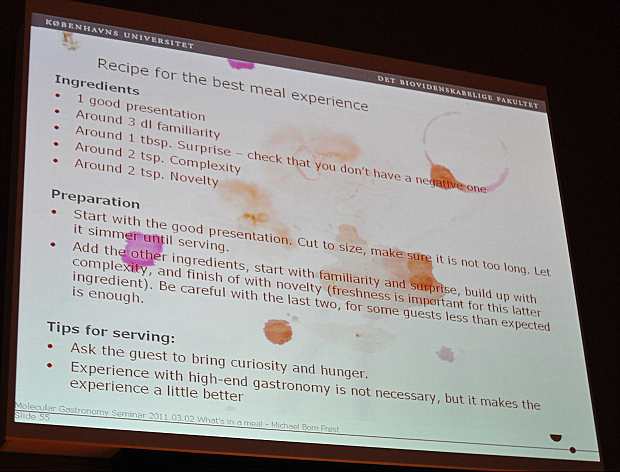Michael Bom Frøst addressed complexity in meals based on experiments done at noma
What’s in a meal? – The title of associate professor Michael Bom Frøst‘s presentation at the recent seminar on molecular gastronomy in Copenhagen may seem surprisingly simple, but it turned out that a main topic of his presentation was in fact complexity and how it influences the meal experience. Together with PhD student Line Holler Mielby he conducted experiments in a real restaurant setting and given that the experiment took place in noma‘s chambre séparée and that some of noma’s chefs helped out in the kitchen you can imagine how easy it was to find volunteers. Previous studies have suggested a correlation between complexity and liking following an inverted U-shaped curve, suggesting that there is an optimum amount of complexity for maximum pleasure as shown in the figure below [1]. The main purpose of the experiment was to test this hypothesis. The theory also suggests that due to the exposure effect, diners who often eat “complex” food at high end restaurants would prefer more complexity compared to people who eat high end food less often. To address this question it was made sure that the test group included people with and without experience of high end restaurant food.
Wundt/Berlyne curve showing expected correlation between complexity and liking. The experiments were designed to test this hypothesis.
It is not easy to define what complexity means, but despite attempts at splitting the term up it seems that good results have been obtained simply by using the word complexity as is. In the previous study Expectations and surprise in a molecular gastronomic meal by Mielby and Frøst the complexity of the presentation was studied [2]. In this experiment the complexity of the food was varied. In the design of the experiment this was perhaps the most challenging part, as Michael Bom Frøst admitted that intended complexity did not always correspond with perceived complexity.
Despite the difficulty of defining complexity, the term is often invoked by chefs, both as something to strive for and something to avoid. Statments such as “primary flavors often depend on secret ingredients to make them more interesting and complex” (Michael Roberts), “less is more” (Gordon Ramsey in a comment to an over complicated dish in one of his TV shows) and “simplicity” (term used in the Manifesto for the New Nordic Kitchen) all allude to different levels of complexity.
To make a long story short, the real complexity-liking curve was not a U-shaped curve, but rather a steadily increasing curve which flattens out as shown below. – Maybe we really like complex dishes, says Michael Bom Frøst. The results also showed that experience level of the diners had no influence on the curiosity, surprise, novelty or complexity responses. However, hedonic/liking and familiarity received higher scores from the this test group. One further conclusion was that novelty is a better predictor of liking than complexity in high end dining.
The real complexity-liking curve differs from that predicted by Wundt/Berlyne in that there is noe decrease in liking as complexity increases. – Maybe we really like complex dishes, says Michael Bom Frøst.
Translating the results into a more popularized format, Michael presented the following “Recipe for the best meal experience”:
Further reading
Website with descriptions of experiments in 2008 and 2010 (in Danish only) as well as pictures of dishes served in 2007, 2008 and 2010
Expectations and Surprise in a Molecular Gastronomic Meal (pdf), presentation given by Line Holler Mielby at Eurosense 2008
References
[1] Berlyne, D. E. 1970. Novelty, Complexity, and Hedonic Value. Perception & Psychophysics 1970, 8 (5A), 279-286.
[2] Mielby, L. H.; Frøst, M. B. Food Quality and Preference 2010, 213. DOI: 10.1016/j.foodqual.2009.09.005. (subscription required)





Can just say that this is a fascinating project. A very good thing that they take this out to the people
Thanks for all the wonderful reports. Some of it will be very useful for our book. 🙂